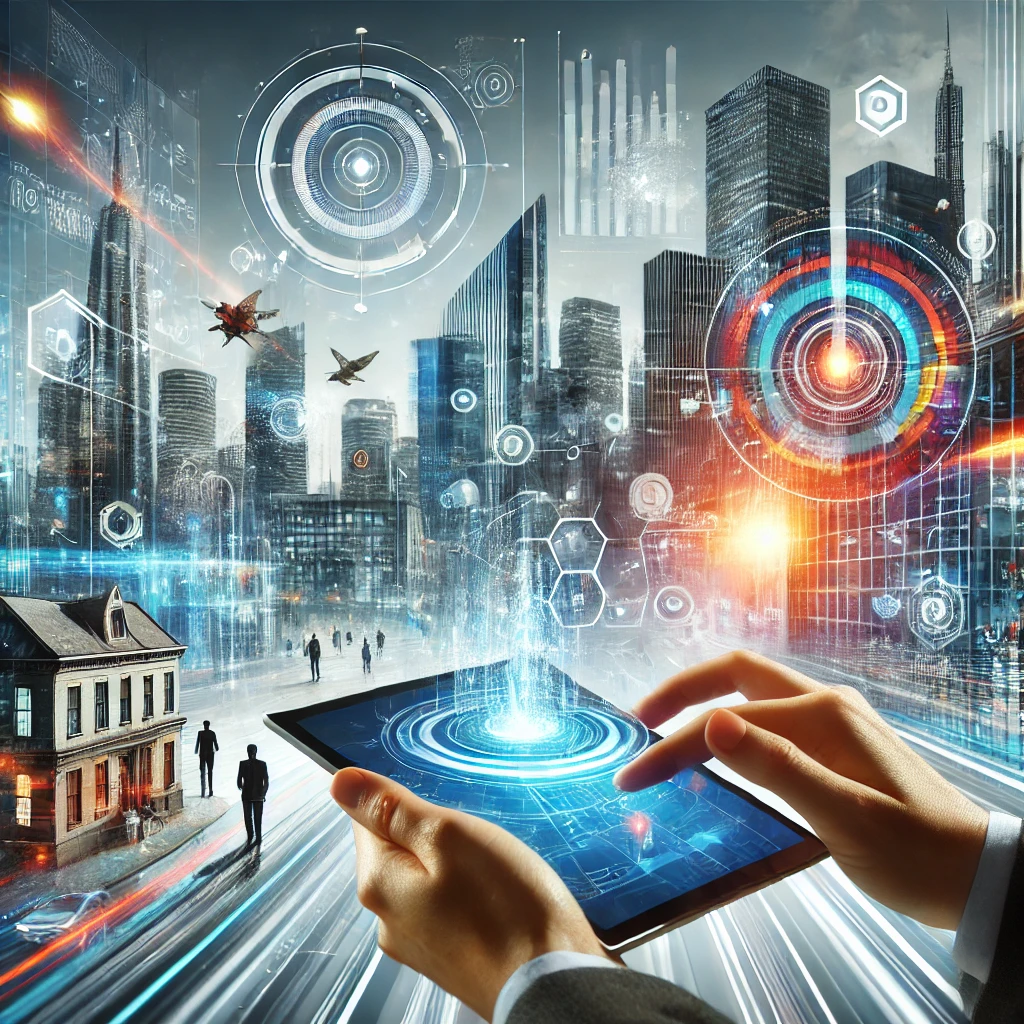
AR Soft: Transforming the Future with Augmented Reality Software
In the digital era, Augmented Reality (AR) has become a significant force driving innovation and transformation across various industries. AR soft, or AR software, refers to the cutting-edge programs and applications that enable the integration of digital content with the real world. As businesses and consumers increasingly embrace immersive experiences, AR soft plays a crucial role in reshaping the way we interact with technology, products, and the environment around us.
What is AR Soft?
AR soft, short for augmented reality software, is a technology that superimposes digital information—such as images, sounds, and other sensory enhancements—onto the real-world environment. This blending of digital content with the physical world creates an interactive experience that enhances the user’s perception and interaction with their surroundings.
Unlike virtual reality (VR), which creates a completely immersive digital environment, AR soft overlays digital elements on the user’s real-world view. This technology is utilized in various applications, from mobile games like Pokémon Go to enterprise solutions in fields such as healthcare, education, retail, and manufacturing.
The Evolution of AR Soft
The concept of augmented reality has been around for decades, but it wasn’t until recent years that AR soft gained widespread attention and adoption. The evolution of AR soft can be attributed to advancements in computing power, mobile technology, and the proliferation of smartphones with sophisticated cameras and sensors.
Early AR applications were limited to specialized hardware and required significant technical expertise to develop and deploy. However, the rise of mobile AR s0ft, such as Apple’s ARKit and Google’s ARCore, has democratized access to this technology, allowing developers to create AR experiences for millions of users worldwide.
Applications of AR Soft Across Industries
1. Healthcare
AR soft is revolutionizing the healthcare industry by providing innovative solutions for medical training, surgery, and patient care. Surgeons can use AR soft to visualize complex anatomical structures in 3D, improving precision during surgeries. Medical students can also benefit from AR-based training tools that simulate real-life scenarios, allowing them to practice procedures in a safe and controlled environment.
In addition, AR s0ft is being used to enhance patient education by providing interactive visualizations of medical conditions and treatment options. This technology empowers patients to make informed decisions about their health and well-being.
2. Education
The education sector is another area where AR soft is making a significant impact. By integrating AR into educational content, teachers can create immersive and engaging learning experiences that cater to different learning styles. AR soft can bring textbooks to life by overlaying interactive 3D models, animations, and videos onto printed pages, making complex concepts easier to understand.
For example, students studying biology can use AR s0ft to explore the human body in 3D, examining organs and systems in detail. This interactive approach not only enhances comprehension but also fosters curiosity and a deeper interest in the subject matter.
3. Retail
In the retail industry, AR soft is transforming the shopping experience by allowing customers to visualize products in their real-world environment before making a purchase. Virtual try-on solutions enable shoppers to see how clothing, accessories, or makeup will look on them without physically trying the items. This reduces the likelihood of returns and enhances customer satisfaction.
AR s0ft is also being used in product packaging, where scanning a QR code or label can unlock additional content, such as tutorials, reviews, or promotional offers. This technology enhances brand engagement and provides consumers with valuable information to inform their purchasing decisions.
4. Manufacturing
Manufacturing is another industry where AR soft is driving innovation and efficiency. By integrating AR into production processes, companies can improve quality control, streamline assembly lines, and enhance worker training. AR s0ft allows workers to access real-time data and instructions, reducing errors and increasing productivity.
For instance, technicians can use AR goggles to receive step-by-step guidance on assembling complex machinery, with digital overlays providing precise measurements and alignment tips. This technology not only improves accuracy but also reduces the time required for training new employees.
5. Gaming and Entertainment
The gaming and entertainment industry was one of the first to embrace AR soft, with mobile games like Pokémon Go and Ingress leading the way. AR soft enhances gaming experiences by blending the virtual and real worlds, creating immersive environments where players can interact with digital characters and objects in their physical surroundings.
Beyond gaming, AR s0ft is also being used in live events, museums, and theme parks to create interactive and personalized experiences. For example, visitors to a museum can use AR apps to see historical artifacts come to life, providing a deeper understanding of the exhibits.
The Role of AR Soft in Marketing and Advertising
AR soft is becoming an increasingly important tool in marketing and advertising, offering brands new ways to engage with consumers. By creating interactive AR experiences, companies can capture the attention of their target audience and provide them with memorable, personalized interactions.
1. Interactive Product Demos
AR soft allows brands to offer interactive product demonstrations that provide a hands-on experience without the need for physical samples. For example, a furniture retailer can create an AR app that lets customers visualize how a piece of furniture will look in their home, adjusting size, color, and placement in real time. This helps consumers make confident purchasing decisions and reduces the likelihood of returns.
2. Branded AR Experiences
Brands are increasingly using AR soft to create unique and engaging experiences that resonate with their audience. By integrating AR into marketing campaigns, companies can offer immersive content that goes beyond traditional advertising methods. For example, a cosmetics brand might create an AR filter that allows users to virtually try on different makeup looks and share the results on social media.
3. Enhanced Print Advertising
AR soft is also being used to enhance traditional print advertising. By incorporating AR elements into print ads, magazines, and billboards, brands can provide consumers with additional content, such as videos, 3D models, or interactive games. This not only captures attention but also drives higher engagement and conversion rates.
Challenges and Opportunities in AR Soft Development
While AR soft offers immense potential, there are several challenges that developers and businesses must overcome to fully realize its benefits. These challenges include technical limitations, user adoption, and the need for compelling content.
1. Technical Challenges
Developing AR soft requires expertise in computer vision, 3D modeling, and real-time rendering. Ensuring that AR experiences are seamless, responsive, and accurate can be challenging, especially when dealing with complex environments or mobile devices with varying capabilities. Developers must also address issues related to latency, battery consumption, and device compatibility to deliver a smooth user experience.
2. User Adoption
Although AR soft is gaining popularity, widespread adoption is still in its early stages. Many consumers may not be familiar with AR technology or may be hesitant to use it due to concerns about privacy, security, or usability. To overcome these barriers, businesses need to educate consumers about the benefits of AR and create intuitive, user-friendly applications that provide clear value.
3. Content Creation
Compelling content is essential for the success of AR soft. Developing high-quality, engaging AR experiences requires collaboration between designers, developers, and content creators. Businesses must invest in creating content that is not only visually appealing but also provides meaningful and relevant interactions for users.
The Future of AR Soft
The future of AR soft is bright, with continued advancements in technology and increasing adoption across industries. As hardware becomes more powerful and accessible, we can expect AR experiences to become even more immersive and widespread.
In the coming years, AR s0ft is likely to play a central role in the development of the metaverse—a collective virtual shared space that combines physical and digital realities. As more companies invest in AR technology, we can expect to see new applications and use cases that will further transform how we live, work, and interact with the world around us.
Conclusion
AR soft is a powerful technology that is reshaping industries and creating new opportunities for innovation and growth. From healthcare and education to retail and entertainment, AR s0ft is transforming the way we experience and interact with the world. As businesses and consumers continue to embrace this technology, the potential for AR s0ft is limitless, promising a future where digital content seamlessly enhances our physical reality.
By understanding the capabilities and applications of AR soft, businesses can leverage this technology to stay ahead of the competition, deliver exceptional experiences, and drive success in the digital age. Whether you’re a developer, marketer, or consumer, the impact of AR s0ft is undeniable, and its influence will only continue to grow in the years to come.





